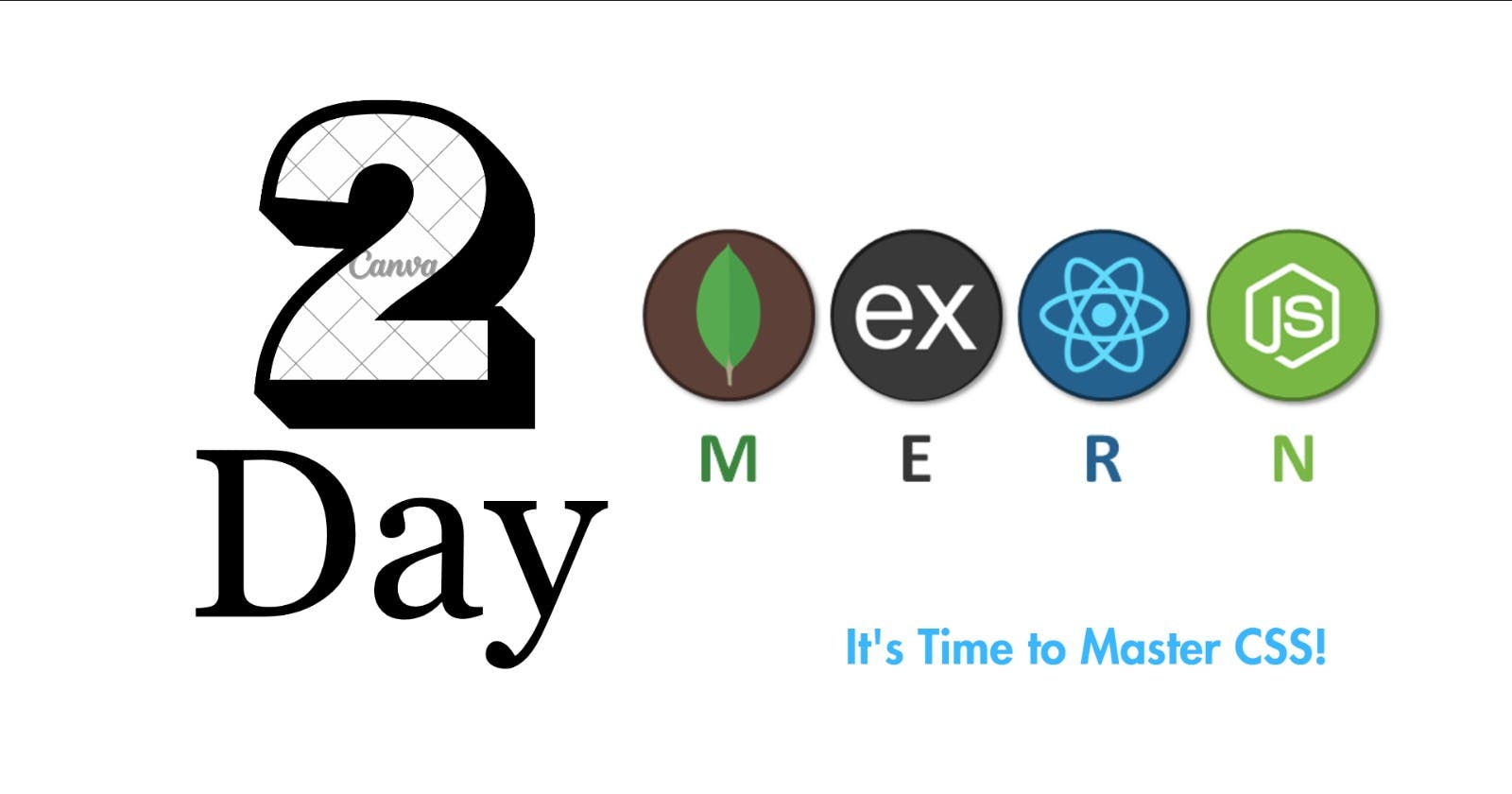Day 2 of 100 Days of MERN Stack Development Learning: Journey Through HTML and CSS
Day 2 of 100 Days of MERN Stack Development Learning: Journey Through HTML and CSS
As the journey into the realm of MERN (MongoDB, Express.js, React.js, Node.js) Stack Development continues, day 2 marks an exciting step forward. Yesterday's focus was on laying the groundwork with HTML, the backbone of web development. Today, attention shifted towards the styling aspect with cascading style sheets (CSS), delving into various aspects from selectors to layout models.
HTML Recap
Before diving into CSS, a quick recap of HTML sets the stage. HTML (Hypertext Markup Language) is the standard markup language for creating web pages and web applications. It provides the structure and content of a webpage, defining elements such as headings, paragraphs, images, links, and more.
Introduction to CSS
CSS (Cascading Style Sheets) is the language used to style the presentation of HTML elements. While HTML focuses on structure, CSS adds aesthetics and visual appeal. Day 2 began with a comprehensive introduction to CSS, understanding its syntax, selectors, and how to apply styles to HTML elements.
Exploring CSS Fundamentals
The journey continued with a deep dive into CSS fundamentals:
Selectors
Understanding selectors is crucial as they define which elements a style will apply to. From simple element selectors to more complex ones like class and ID selectors, each plays a significant role in styling.
Colors
Colors breathe life into web pages. Learning how to specify colors using hexadecimal, RGB, RGBA, and HSL notations enables developers to craft visually appealing designs.
Backgrounds
CSS provides numerous options for styling backgrounds, from solid colors to gradients, images, and patterns, allowing developers to create captivating visual experiences.
Borders
Borders add definition and structure to elements. Mastering border properties such as style, width, and color enhances the overall design aesthetic.
Box Model
Understanding the box model is fundamental to CSS layout. Every element in CSS is represented as a rectangular box comprising content, padding, border, and margin. Mastery of the box model enables precise control over element positioning and layout.
Text, Links, Lists, and Tables
CSS offers extensive styling options for text, links, lists, and tables, allowing developers to customize typography, create stylish navigation menus, design elegant lists, and format tabular data effectively.
Flexbox and Grid
Flexbox and Grid are powerful layout models introduced in CSS3, revolutionizing the way web layouts are designed. Flexbox excels in one-dimensional layout, while Grid provides a two-dimensional layout system, offering unparalleled control over element positioning and alignment.
Conclusion
Day 2 of the 100 days MERN Stack Development journey proved to be enlightening and enriching. Mastery of HTML laid the foundation, while the exploration of CSS fundamentals opened doors to endless possibilities in web design and development. As the journey progresses, the knowledge gained will serve as building blocks for mastering advanced concepts and creating dynamic, visually stunning web applications using the MERN stack. With each passing day, the journey becomes more exciting, promising a rewarding career in web development.
